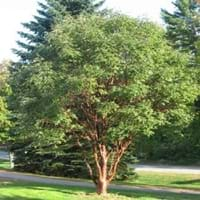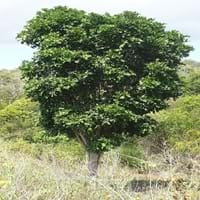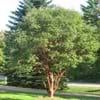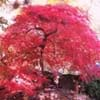Life Span
Perennial
Perennial
Types
Not Available
Not Available
Habitat
Mixed deciduous forest
Littoral rainforest, Near Estuaries
USDA Hardiness Zone
4-8
9-15
Sunset Zone
2a, 2b, 3a, 3b, 4, 5, 6, 7, 8, 9, 14, 15, 16, 17, 18, 19, 20, 21
H1, H2, 16, 17, 18, 19, 20, 21, 22, 23, 24
Habit
Upright/Erect
Spreading
Flower Color
Yellow
White
Flower Color Modifier
Bicolor
Bicolor
Fruit Color
Green
Orange, Light Yellow, Orange Red, Black
Leaf Color in Spring
Dark Green
Green, Light Green, Yellow green
Leaf Color in Summer
Dark Green
Green, Yellow green
Leaf Color in Fall
Red, Green, Bronze, Orange Red
Green, Yellow green
Leaf Color in Winter
Not Available
Green, Yellow green
Leaf Shape
Compound
Pinnate
Plant Season
Spring, Summer, Fall, Winter
Spring, Summer, Fall, Winter
Sunlight
Full Sun
Full Sun, Partial Sun, Partial shade
Type of Soil
Clay, Loam
Clay, Loam, Sand
The pH of Soil
Acidic, Neutral, Alkaline
Acidic, Neutral, Alkaline
Soil Drainage
Well drained
Average
Bloom Time
Spring
Early Spring, Spring
Tolerances
Not Available
Frost, Pollution, Salt
Where to Plant?
Ground
Ground
How to Plant?
Grafting, Seedlings
Seedlings
Plant Maintenance
Medium
Medium
Watering Requirements
Medium
Reduce water once established, Requires regular watering, Requires watering in the growing season
In Summer
Lots of watering
Average Water
In Spring
Moderate
Less Watering
In Winter
Average Water
Less Watering
Soil pH
Acidic, Neutral, Alkaline
Acidic, Neutral, Alkaline
Soil Type
Clay, Loam
Clay, Loam, Sand
Soil Drainage Capacity
Well drained
Average
Sun Exposure
Full Sun
Full Sun, Partial Sun, Partial shade
Pruning
Remove damaged leaves, Remove dead branches, Remove dead leaves
Prune if you want to improve plant shape, Remove dead or diseased plant parts
Fertilizers
All-Purpose Liquid Fertilizer
slow-release fertilizers
Pests and Diseases
Red blotch
Borers
Plant Tolerance
Drought
Frost, Pollution, Salt
Flowers
Insignificant
Insignificant
Flower Petal Number
Single
Single
Fragrant Bark/Stem
No
Yes
Foliage Texture
Medium
Medium
Foliage Sheen
Matte
Glossy
Attracts
Not Available
Birds, Butterflies
Allergy
Not Available
Skin rash
Aesthetic Uses
Showy Purposes
Beautification, Landscape Designing, Showy Purposes
Beauty Benefits
Not Available
Not Available
Environmental Uses
Air purification
Air purification, Food for birds, Nesting sites for birds, No fertilizer, pesticides, or herbicides needed, Prevent Soil Erosion, Shadow Tree, Shelter for wildlife, Used to establish native woodland
Medicinal Uses
Not Available
Not Available
Part of Plant Used
Wood
Tree trunks
Other Uses
Showy Purposes
Used as firewood, Wood is used fore making tools, Wood is used in construction
Used As Indoor Plant
No
No
Used As Outdoor Plant
Yes
Yes
Garden Design
Feature Plant, Foundation, Mixed Border
Shade Trees, Tropical
Botanical Name
ACER griseum
CUPANIOPSIS anacardioides
Common Name
Paperbark Maple
Tuckeroo, Green leaved tamarind
In Hindi
paperbark maple
Carrotwood ट्री
In German
paperbark Ahorn
Carrotwood Baum
In French
érable paperbark
Carrotwood Arbre
In Spanish
arce paperbark
Árbol carrotwood
In Greek
Paperbark σφενδάμου
Carrotwood Δέντρο
In Portuguese
de bordo paperbark
Árvore Carrotwood
In Polish
klon paperbark
Carrotwood Drzewo
In Latin
paperbark acernis
Carrotwood ligno
Phylum
Magnoliophyta
Magnoliophyta
Class
Magnoliopsida
Magnoliopsida
Order
Sapindales
Sapindales
Family
Aceraceae
Sapindaceae
Clade
Angiosperms, Eudicots, Rosids
Angiosperms, Eudicots, Rosids
Tribe
Not Available
Not Available
Subfamily
Not Available
Sapindoideae
Number of Species
Not Available
Not Available
Season and Care of Paperbark Maple and Carrotwood Tree
Season and care of Paperbark Maple and Carrotwood Tree is important to know. While considering everything about Paperbark Maple and Carrotwood Tree Care, growing season is an essential factor. Paperbark Maple season is Spring, Summer, Fall and Winter and Carrotwood Tree season is Spring, Summer, Fall and Winter. The type of soil for Paperbark Maple is Clay, Loam and for Carrotwood Tree is Clay, Loam, Sand while the PH of soil for Paperbark Maple is Acidic, Neutral, Alkaline and for Carrotwood Tree is Acidic, Neutral, Alkaline.
Paperbark Maple and Carrotwood Tree Physical Information
Paperbark Maple and Carrotwood Tree physical information is very important for comparison. Paperbark Maple height is 610.00 cm and width 610.00 cm whereas Carrotwood Tree height is 610.00 cm and width 910.00 cm. The color specification of Paperbark Maple and Carrotwood Tree are as follows:
Paperbark Maple flower color: Yellow
Paperbark Maple leaf color: Dark Green
Carrotwood Tree flower color: White
- Carrotwood Tree leaf color: Green, Light Green and Yellow green
Care of Paperbark Maple and Carrotwood Tree
Care of Paperbark Maple and Carrotwood Tree include pruning, fertilizers, watering etc. Paperbark Maple pruning is done Remove damaged leaves, Remove dead branches and Remove dead leaves and Carrotwood Tree pruning is done Prune if you want to improve plant shape and Remove dead or diseased plant parts. In summer Paperbark Maple needs Lots of watering and in winter, it needs Average Water. Whereas, in summer Carrotwood Tree needs Average Water and in winter, it needs Less Watering.





